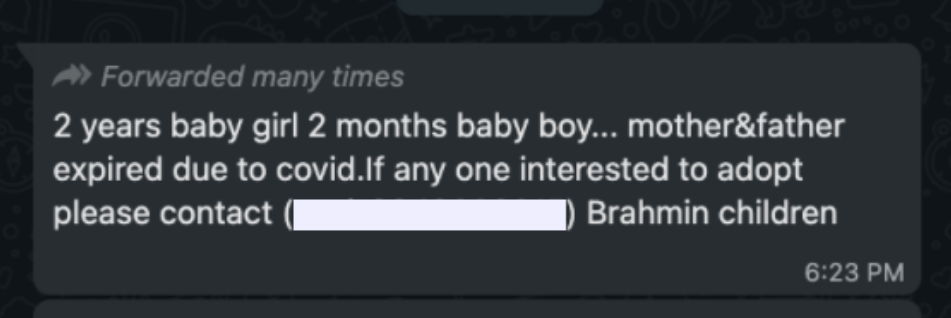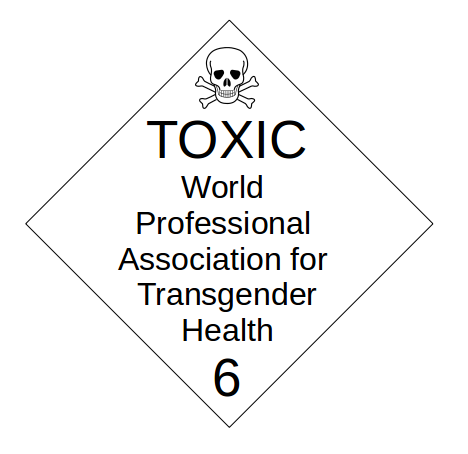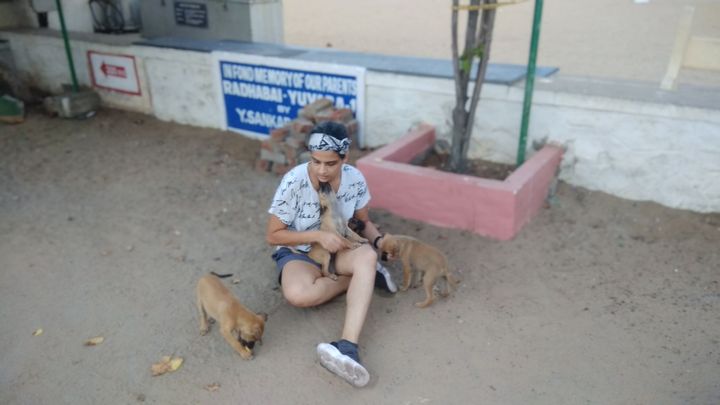'COVID-19 Child Adoption:' A New Bait by Traffickers Targeting Orphaned Kids
Thousands of Indian kids orphaned due to Covid-19 end up in the hands of traffickers.

For many people around the world, the past year and a half has swung by pretty fast despite the pandemic. It appears as if the rich countries have managed to reboot their economy, and people are returning to how things were before the onslaught of COVID-19. White leaders make international visits, posing for photographs while bumping elbows, a fitting portrayal of things getting back to “normal” again.
But if you live in a country like mine, this pandemic has not just displaced millions of people; the tsunami of deaths, loss of livelihood, economic downfall, political ineptitude are just scratches to the surface of a bottomless pit.
In a survey conducted by a city-based NGO The Nudge Foundation, of the nearly 350 million people below the poverty line, about 70 million were estimated to be “ultra-poor.” An economic class of people who survive on less than ₹100 a day ($1 is ~₹75). These families live in tiny nooks where the governmental schemes – apparently designed for the welfare of these very people – barely reach. Poverty and illiteracy are weights they carry and pass on to their plenteous progeny. With no knowledge of contraception, the women in many families are used as baby making machines. Often a woman keeps giving birth until a male child is born, because they believe he will deliver them from their dire state. The Director of the TNF that conducted the survey believes ultra-poverty increased by at least 10 per cent in the many villages TNF works in. The restrictions imposed during lockdown ensured that families spent most of the time in their houses, and this led to a two-fold problem: the spike in the number of newborn in the ultra-poor households, and the steep rise in the sexual, physical and mental violence women faced at the hands of men.
COVID-19 has discernibly taken a toll on people, and it is likely that a great majority of rural deaths in India have been severely under reported. The magnitude of unseen deaths was reflected by the bodies found floating in the Ganges or buried in the sand by the bank. With all State crematoria running out of space, people began dumping bodies into the river, or burning them in a pile.
Amid controversy and contemptible governance, the Modi-led political party paved the way for more disasters. Despite clear warnings, the decision to allow the Kumbh Mela – a religious gathering which turned out to be a super spreader event – has also been decried as imprudent. With hopes of setting up government at the federal level for the third consecutive term, the party lacked the courage to call off a mass Hindu gathering for fear of losing its majority vote. And for the same reason, it didn’t hold back on its disgraceful election campaign in some of the most populated States of India. This travesty was also made worse by the other contesting parties. While the official declared deaths due to COVID-19 are shown to be a total of 0.4 million, data scientists and experts seem to disagree and believe them to be an estimate of 2.5 million instead.
Social media adoption requests
Given this dismal state, I was sure things couldn't get any worse, but they did. In May, a friend told me about an absurd WhatsApp forward that was making its rounds about two babies being available for adoption. Aside from its blatantly casteist codicil at the end, I didn’t think much of it.

But soon, the social media adoption posts both seeking babies for adoption, as well as families giving children away, became too hard to ignore. As per data submitted by 5th of June, the National Commission for Protection of Child Rights (NCPCR) confirmed that as many as 30,071 children were orphaned, lost a parent or were abandoned mostly due to the pandemic. During the first wave of COVID-19, an image of a baby trying to wake his dead mother, a migrant worker up at Bihar railway station, sent shockwaves around the world. That gut wrenching image made the rounds on social media calling out the apathy of the State in mitigating such deaths, but like most things, was soon forgotten. No word on the safety and well-being of the child, nor pompous caste-based adoption calls on social media.

Elsewhere in a small town of Maharashtra, a baby was found next to the body of his mother who had been dead for two days inside their home. The neighbors didn’t want to risk getting infected by opening the house themselves, but the police were called because of the unbearable stench. There are no follow ups to stories like these. Indian journalists must be thoroughly overwhelmed trying to keep track of every ongoing case.
In all the social media posts of children ready to be adopted, the format is eerily similar. Sometimes these posts have the exact same words, just a different contact number and name - depending on the State in which the adoption is advertised. Anurag Kundu, the chairperson for the Delhi Commission for Protection of Child Rights has been tracking these people online and contacted the perpetrators. "One of my staff members called the number in the Facebook page, and they quoted over $7000 for one child,” he said. Having never seen so many people die in such a short time span, Kundu believes the magnitude of the issue dramatically increased after the second wave, leaving behind so many children below the age of 18.
While most of the adoption ads are by ill-willed netizens trying to test the water for gullible responses, some online users, with genuine concern, put out information soliciting help for families where the children were orphaned. Such posts end up in the database of traffickers who now know of a potential child to trap.
Poor jurisprudence and low conviction rate even before COVID-19
Very few investigations of missing children have been successful in safeguarding the child, and jailing the trafficker. A case of a two-day old girl being trafficked by an adult woman was booked by the Anti Human Trafficking Unit on 13th July. In Ranchi airport, fifteen children who were being trafficked by a man and his family were handed over to the AHTU last month. But less than 1% of Indians charged with slavery offences during the past decade have been convicted. Toothless law enforcement and India’s under-resourced police and jurisprudence have resulted in fewer people being punished and victims receiving no support. Snigdha Sen, a researcher at the anti-slavery advocacy group Tafteesh said; “There is no fear of the law. Traffickers who are out on bail have a lot of power and they influence witnesses, threaten survivors and often commit the crime again. Many of them eventually get acquitted.” As per the report submitted to the Thomson Reuters Foundation, of the 429 people charged with involvement in 198 trafficking cases in the states of West Bengal and Andhra Pradesh from 2008 until 2018, a total of only 3 convictions were made.
The National Crime Report Bureau of India data from 2018 indicates that 51% of all trafficking victims were children, more than 80% of which were girls. Traffickers often prey on marginalized communities who have no recourse or awareness to seek redressal – Dalits, Tribal communities and religious minorities are the main targets. Exploitation often takes various forms; aside from the sex trafficking mafia, there are begging rackets where the trafficker forcefully deforms a child’s face or body for sympathy/ revenue, or bonded labour in sweatshops and factories with toxic materials. Many children are “sold” by their parents to work in these factories. Sonal Kapoor, the CEO of Delhi-based NGO Protsahan said, “our organisation has come across cases where one parent had died and the other one, usually the father, pushed children into manual work.”
The most horrific stories emerge of young girls being forced into the sex trade even pre-pandemic, which COVID-19 has gravely exacerbated. Often, parents of these children are lured into the promise of a “better life” due to their poor socio-economic conditions, which eventually compels them to “send” or “sell” their children to these traffickers. In many cases, it is a family member who brokers the deal with the parents. Now imagine the scale of exploitation when a child is orphaned, and the State awards guardianship of that child to a close relative.
How does adoption work in India?
Central Adoption Resource Authority (CARA) is the statutory body of the Women and Child Development Ministry that serves as the nodal agency for adoption. CARA is also responsible for monitoring and regulating in-country and inter-country adoptions. It operates via various agencies that report to CARA directly. There are steps laid out which the prospective adoptive parents have to meticulously follow, a social worker is assigned to the case to run background checks etc. It is then a child is deemed legally adopted. In theory, this procedure is quite water tight; and in cases where a relative chooses to adopt the orphaned or abandoned child, every procedure – except selection of a child – must still be adhered to.
The Union Ministry for Women and Child Development (WCD) has advised the health ministry that parents infected and admitted to the hospital with COVID-19 must declare who their children should be handed over to if they die, using a form. This was brought in to ensure safety of the child, and find a trustworthy family that the parents approve of. Given the mounting cases, this precautionary step should be welcomed. But in most cases, when family members abuse a child, parents don’t get wind of the situation at all. So the children run the risk of parents handing their child to a perpetrator. Either way, this does not mean that the adoption can take place informally or be hastened during the pandemic. The child’s custody can only be legally received when the adoptive parent follows protocol.
Indian Prime Minister Modi set aside a corpus fund of ten lakhs (about $13,400) for every orphaned child. This will be given to them as a stipend from the ages of 18-23. Every State has its own financial schemes set aside to help orphaned children too. But are there mechanisms to ensure that these children don’t fall prey to the sex industry in order to reap the benefit of such a fund?
Has India become too “woke” for women and girls?
India, like most countries in the Global South, has sold itself to the woke ideology; there are a few pockets of opposition but they are motivated by religion and fascism. Indian liberals are in complete support of the “gender” cult; they are pro pornography, prostitution, self-identification and affirmation. This takeover happened gradually, but because corporations have sensed a market in this ideology, it has picked up pace in the last five years.
While on the one hand the liberals accuse our conservative federal government for being regressive in their policies – which they are – on the other hand, liberals wilfully support various forms of sexual exploitation of women as “choice.”
In a recent social media post, a female MP shared an article she wrote in India’s leading newspaper about legalising “sex work.” There wasn’t even a consideration for decriminalising the prostitutes and making the pimps and Johns accountable. Instead, in her article she said:
“We must recognise sex work as work and stop ourselves from assigning morality to their work. Adult men, women and transgender persons in sex work have the right to earn through providing sexual services; live with dignity; and remain free from violence, exploitation, stigma and discrimination. It is time we rethink sex work from a labour perspective, where we recognise their work and guarantee them basic labour rights.”
The legislation governing prostitution in India is the Immoral Traffic (Prevention) Act, 1956. It penalizes running a brothel, soliciting in a public place and living off the earnings of prostitution. The MP who wanted “sex work” legalized called the Trafficking Act archaic, blaming popular culture depicting prostitutes as having been forced into the trade, in need of “rescue” and “rehabilitation.” But it isn't a "popular depiction" to show women and girls being coerced. It is the reality for millions.
She clarifies, however, that it is wrong when minors get caught in this racket; but how exactly can we control a flourishing industry rooted in sexual labour and fuelled by greed? Especially when pimps lie on the behalf of the children? There are also cases where teenagers are put on a high dosage of Oradexon (commonly known as a cow fattening drug). It is meant to treat inflammation and allergies in humans, but is predominantly used by farmers to fatten their livestock. Pimps believe that the “cow steroid” increases the appetite and makes for a more “curvy” teen who the “clients” would prefer.
Without the so-called archaic Act, how can anyone save the children who end up bearing the brunt of this "work” that apparently some women “choose?” Prostitution is approximately an $8-Billion industry in India, with more than 2 million prostitutes and 275,000 brothels. There are roughly 10 million women caught in the sex trade and likely many more who haven’t been accounted for. How can anyone truly find out who does it out of “choice/consent” and who is raped? What is a good scale to measure “consent” anyway?
While the laws are strong on paper, the conviction rates speak the bitter truth. That’s also why raids by the authorities don’t serve as a deterrent. Superintendent Rakesh Shukla says, “If we do more raids then they will have to go to a lawyer and to the court, and then the expenses incurred will fall on this poor girl. And they will have to pay through prostitution.” If the execution of an existing law is so toothless, how can we envision eliminating a law in its entirety?
In another “woke” agenda, many domestic and foreign NGOs came together to stop a Bill that would investigate all types of trafficking, and rescue, provide protection for and rehabilitation of trafficked victims. The Netherlands-based Mama Cash came onboard as one of the major funders for the campaign against the Bill. The claim was that it “conflated trafficking with sex work, which would have increased stigma, discrimination and violence against sex workers, reduced their autonomy and agency, and threatened their human rights.” In a country that is known for its ineffectual jurisprudence where women fight for three or four decades for any legal recourse, it is concerning to see Western organisations like Mama Cash siding with groups that further amplify women’s sexual exploitation. While “sex work” may benefit a minority group, to halt a Bill that could potentially save thousands of children over semantics is cruel and anti-women.
Despite the campaign, the Bill has been listed for votes in the upcoming parliamentary session. It has upset the pro “sex work” lobby groups in the country. I don’t think criminalizing prostitution is the solution; there must be systematic provisions laid out for the rehabilitation of the prostituted women. I also don’t think the existence of an exploitative industry such as prostitution should stand in the way of a legislation that could potentially save trafficking victims. The State has to engage in nuanced discussion to arrive at a solution; but while we wait, the brunt shouldn’t have to be borne by the marginalized sections - those with or without the illusion of choice.
While a desperate parent is ready to pack away a child to ruthless traffickers in an Amazon-like deal, we need stronger rules in place to mitigate the situation, as opposed to relaxing existing laws. We need to punish the industry that feeds of female bodies as opposed to legalizing rape.
What is the “normal” we are trying to return to?
Despite the death toll and dystopian state of the country, Prime Minister Modi has continued to engage in an indulgent redevelopment plan that includes a new parliament, multi-storey office blocks, new homes for the vice-president and himself. It's expected to cost upwards of 200 billion rupees ($2.7billion) and the construction work was not obstructed even during the lockdown. He maintains that his government has done a great job in combating the COVID-19 pandemic, even as India is labelled a “country of mass poverty” once again after 45 years.
Pre-pandemic in 2019, the United Nations estimated the number of poor in India to be 364 million, 28 percent of the population. Caste-based violence, marital rape, honor killing, dowry deaths, female foeticide will continue to plague India’s women. The thousands of children orphaned during COVID-19 will be forced into some form of slave labour in much the same way as those children whose parents sold them away.
Any resistance by women like me who are neither liberal feminists nor conservatives is shunned as bigotry or prudishness. Between fighting the fascist country leaders and liberal outfits in every State, there is no such thing as a “normal” to go back to. Unfortunately, for most of us, there was never such a thing as ‘normal’ in this country to begin with.
Do you care about safeguarding? Help us publish female authors who bravely expose practices harmful to children! We pay our all-female staff and writers thanks to our paid subscribers. Join today!
Enter your email below to sign in or become a 4W member and join the conversation.
(Already did this? Try refreshing the page!)




Comments